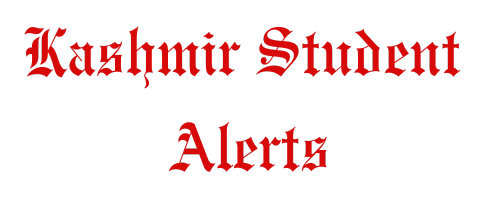Expert cite 3 reasons behind growing drug addiction in Kashmir; Offer preventive measures
Official data reveals nearly 1.5 lakh people use cannabis, 5.4 lakh opoids, 1.68 lakh sedatives apart from cocaine, amphetamine-type stimulants, inhalants and hallucinogens
Rehan Qayoom Mir
Srinagar, Jun 16 (KNO): Director Youth Development and Rehabilitation Centre Dr Mohammad Muzaffar Khan recently talked to the news agency—Kashmir News Observer (KNO) about the most pressing challenge in Jammu and Kashmir – drug addiction. He shed light on the intricate web of factors that contribute to youth abuse. With deep insight into the issue, he outlined three main categories that encompass the reasons behind this growing concern.
Dr Muzaffar Khan pointed out that there are three main reasons that lead youth into drug addiction.
“The first group comprises individuals who do not have any problems, are highly intelligent, and want to experiment with life by engaging in such activities. They are curious to know the consequences of drug use,” he said.
The second group, he said, consists of those who face personal problems such as failed relationships, exam failures, domestic violence, or other types of failures. They turn to drugs as a coping mechanism for stress, often under the guidance of someone else.
“After this, there is another group of young boys and girls who unknowingly consume drugs without understanding their effects. If someone guides them by saying drugs will provide muscle power, confidence, or a good memory, they may take them due to ignorance. These are the three major consequences,” he said.
Furthermore, the availability of drugs and association with affected peer groups becomes another reason, Dr Khan said, adding, “Additionally, an inherent factor is that when a person falls into addiction, they often become a peddler themselves, seeking more clients and engaging in activities to get more people addicted.”
Preventive Measures
Talking about the preventive measures, Dr Muzaffar said, “We need to provide treatment to all those who are affected. Treatment centers should be established. Preventive measures should be taken for those who are at risk, and for that, training should be provided to teachers, religious scholars, and mothers.”
He said screening facilities at the public health level are necessary. A helpline should be available for affected families and parents who want their children to receive treatment. Furthermore, support for the private sector should be encouraged as the government alone cannot handle all these tasks. He emphasized that some families are not comfortable with mental hospitals and rehabilitation centers and prefer to avail of private sector services.
Additionally, it was the J&K Police in 2008 that recognized the problem and established a center at PCR Srinagar. At that time, there was a general denial, but now, after 18 years, we are witnessing acceptance at the public, policy, and official levels, he said.
Meanwhile, the details shared by the Union Minister for Social Justice and Empowerment, Sushri Pratima Bhoumik, while presenting the figures of drug addicts in the lower house of the parliament in response to a query from National Conference (NC) Member of Parliament, Hasnain Masoodi in March this year, reveal a worrying state of drug addiction in the country, with Jammu & Kashmir being hit particularly hard.
According to the figures presented by the Minister, the estimated number of children and adults currently using various psychoactive substances in India is alarmingly high. The prevalence of alcohol use among adults is estimated to be 17.1%, with an estimated number of 15.1 crore users. Cannabis, opioids, sedatives, inhalants, cocaine, ATS, and hallucinogens are also being used by a significant number of people.
Also, the data provided by the Ministry reveals, the prevalence of substance abuse in Jammu & Kashmir is high, with an estimated 108,000 males and 36,000 females using cannabis, 534,000 males and 8,000 females using opioids, and 160,000 males and 8,000 females using sedatives. A smaller percentage of the population uses cocaine, amphetamine-type stimulants (ATS), inhalants, and hallucinogens—(KNO)




